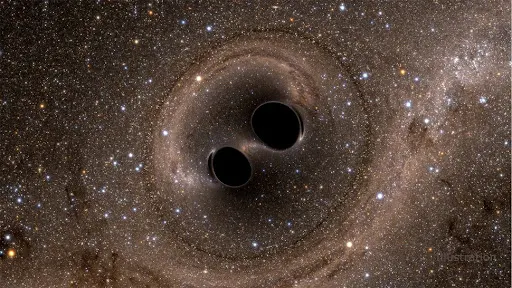Scientists have developed an artificial intelligence (AI) program called Urania that can design gravitational wave detectors that outperform human-made versions. This AI has recently identified 50 novel detector designs that could significantly enhance our ability to "hear" the universe.
Key Points:
- Enhanced Sensitivity: One AI-designed detector shows a 1.6 times increase in sensitivity to gravitational waves from supernovas compared to LIGO's upcoming Voyager upgrade. This could potentially quadruple the number of detectable events by allowing the detection of fainter and more distant signals.
- Early Warning Systems: Another AI-designed detector shows promise in identifying the early stages of binary neutron star mergers. This could provide valuable advance warning for telescopes to observe the accompanying electromagnetic emissions, leading to richer scientific data. These detectors could also capture post-merger gravitational waves, which contain crucial information about the ultra-dense matter inside neutron stars.
- Expanded Observable Universe: Scientists estimate that these new designs could expand the observable volume of the universe by a factor of 50. This leap in capability is compared to going from hearing whispers in the next room to conversations across an entire city.
- Novel and Unconventional Designs: Interestingly, Urania didn't just replicate existing detector designs. It invented entirely new ones, some of which scientists don't yet fully understand. These unconventional designs could lead to new principles in detector technology.
- "Detector Zoo": The researchers have compiled the 50 top-performing designs into a publicly available "Gravitational Wave Detector Zoo" to inspire new approaches for the next generation of instruments.
- AI as a Scientific Innovator: This work highlights the potential of AI to go beyond being a mere computational tool and become a creative partner in scientific discovery, proposing experiments and instruments that might be too complex or time-consuming for humans to conceive.
Gravitational Wave Detectors and LIGO:
Current gravitational wave detectors like the Laser Interferometer Gravitational-wave Observatory (LIGO) are giant L-shaped instruments called interferometers. They measure incredibly tiny changes in spacetime as a gravitational wave passes by Earth. LIGO consists of two identical detectors located thousands of kilometers apart in the United States. This separation helps to distinguish real gravitational wave signals from local vibrations.
LIGO works by splitting a laser beam and sending each half down the long arms of the "L". Mirrors at the end of each arm reflect the beams back. When gravitational waves pass, they cause minuscule changes in the length of these arms, which are detected when the laser beams recombine.
The initial detection of gravitational waves in 2015 was a groundbreaking achievement, confirming a major prediction of Einstein's theory of general relativity and opening a new window to the universe. Advanced LIGO, an upgraded version, significantly increased the sensitivity of the detectors.
Implications of AI-Designed Detectors:
The AI-designed detectors could revolutionize gravitational wave astronomy by:
- Detecting a wider range of cosmic events: The new designs span a broad frequency range, potentially capturing signals from a more diverse array of events, including black hole mergers, neutron star mergers, and supernovas.
- Probing the early universe: Increased sensitivity could allow for the detection of weaker and more distant signals, potentially providing insights into the early universe.
- Improving our understanding of fundamental physics: More precise measurements of gravitational waves can help us test Einstein's theory of general relativity in extreme conditions and learn more about the nature of gravity and matter.
The development of AI-designed gravitational wave detectors marks an exciting step towards a future where machines and humans collaborate to unlock deeper secrets of the cosmos.

